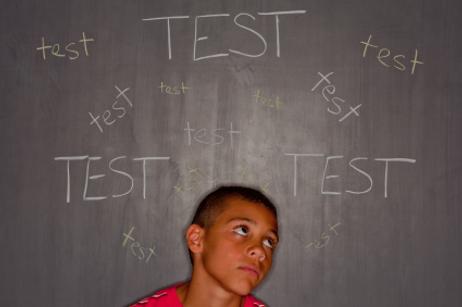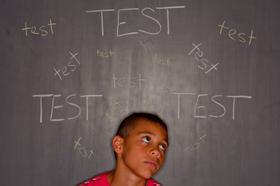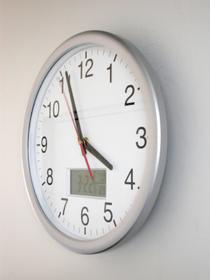Recent standardized test scores released by the Nebraska Department of Education show some serious performance discrepancies between minority students throughout the state and their white counterparts. According to the scores, disparities reign in core subjects like reading and math, and the dismal figures are consistent throughout much of the state. However, despite the discouraging data collected from the most recent bout of statewide testing, there are also a few bright spots among the education clouds as well.
About the Tests
According to Omaha.com, the most recent test results come from a compilation of individual test scores and demographic data from all 249 of the state’s public school districts. Math scores came from a new state test, which that is part of a series of assessments being introduced in Nebraska. These assessments, unlike previous statewide testing, will be more in line with the federal standards in the No Child Left Behind Act. The test was taken for the first time last year, and school officials anticipated some lower scores across the board, as both students and teachers acclimated to the new method of testing.
A new reading test was developed as well, also to conform to the No Child Left Behind standards. According to the Beatrice Daily Sun, the new tests were developed by the state legislature, after the Nebraska Department of Education failed to prove that current assessments were accurate measures of student achievement under federal standards. While some drop in scores was expected, the surprise was the continued disparity between minority and low-income students versus white and Asian students from wealthier areas of the state.
This TED Talk discusses how public schools keep students in poverty.
What the Numbers Show
According to the most recent test results reported at the Journal Star, 72 percent of all students tested at or above reading proficiency across the state. White students scored the highest, with 79 percent reading at or above grade level. However, the numbers fell considerably in the minority demographics, with only 54 percent of Hispanics, 43 percent of Native Americans and 47 percent of African Americans meeting or exceeding state standards.
Math scores were even lower than reading in this latest batch of results. Statewide, just 63 percent of the students tested met grade-level requirements in mathematics. Whites again performed best, with 71 percent making the proficiency level or higher. However, the numbers for minority students were downright dismal, with just 30 percent of African Americans, 32 percent of Native Americans and 44 percent of Hispanics making the grade. For some working in the Nebraska school system, these low test scores simply illustrate something they already know.
“It’s very disturbing to hear that information, but it’s not shocking,” Niki Reed, associate director for Omaha Public Schools, told KETV. Reed says the schools will only be able to do so much to improve the scores, and then parents and after-school programs will need to pitch in to do the rest. According to the news station, the Omaha Boys and Girls Club offers free tutoring to students who sign on for an annual membership that costs just $30.
This video explains why minority students lag behind and what's being done about it.
Room for Improvement
While the numbers were disappointing to Nebraska educators, they do provide clear data on where the school districts statewide need to improve. In fact, these new test scores offer more comprehensive information about areas requiring new teaching methodology and additional resources than previous assessments provided. With this data in hand, and models from a select number of school districts that scored above the statewide average, teachers and administrators do have the initial tools to begin steering students to success.
“”Performance on math standards is not where we’d like it to be,” Nebraska Education Commissioner Roger Breed told the Beatrice Daily Sun. “But I’m also encouraged by the response I’m seeing by teachers and school districts that now have access to this information. It informs what they need to do.”
“If the performance on the assessment is indicative of the math learning that these students have, then one has to look at the full range of opportunities, instruction, courses, expectations across the full curriculum in math,” Breed also stated at KVNO News.
The 11th Grade Crisis
One of the most alarming pieces of information coming from the latest round of test scores was the performance specifically of 11th grade students across the state. This particular grade did not fare well in math or reading, according to the Journal Star. Reading scores were lower for all sub-groups during this school year, and math scores fell even more. Only 29 percent of Hispanics and Native Americans and 20 percent of blacks scored proficient or above on standardized math tests during this school year.
Elliot Elementary School: The Example to Follow?
One shining spot in the midst of disappointing test scores was Elliot Elementary School. This institution, located in the Lincoln Public School District, has received $3 million in federal funding, which it has focused into raising student achievement level. As a result, reading proficiency scores jumped from just 41 percent last year to 79 percent this year, with fourth and fifth graders showing particularly high improvement rates.
“I think what we’re doing are the kinds of things that really can be slow to start but can be embedded in how a school does business,” Jadi Miller, principal at Elliot, told the Journal Star.
With scores that appear to have nowhere to go but up across the rest of the state, Nebraska educators are hoping to use this latest data, along with models of successful schools like Elliot, to improve scores across the state for all students, regardless of race or income level.
Questions? Contact us on Facebook. @publicschoolreview















